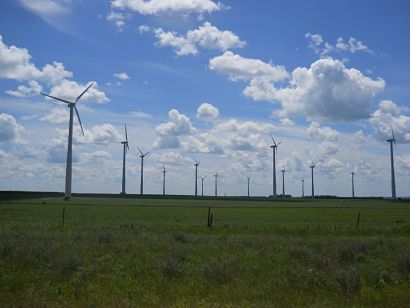
New information about Minnesota’s clean energy transition is being released that could help inform decision-making about the state’s economic recovery. New findings in the 2020 Minnesota Energy Factsheet, commissioned by the Business Council for Sustainable Energy (BCSE) and released today, also show state imports of electricity last year fell to their lowest level in over two decades as new local wind and solar projects filled the gap. As the clean energy transition speeds up across the nation, the report illustrates the big gains Minnesota has made since 2010 in its own energy transition.
The Minnesota Energy Factsheet is a companion to the 2020 Sustainable Energy in America Factbook, compiled by research firm BloombergNEF for the BCSE. The Factbook outlines key trends influencing national and state investment and economics, energy supply, and energy demand. As the American energy sector continues its transformation to cleaner, cheaper sustainable energy, Minnesota remains a leader. Highlights from this year’s Minnesota Factsheet include:
Nearly half of Minnesota’s power came from zero-carbon sources in 2019. Meanwhile, coal’s contribution slipped from 38 percent in 2018 to 32 percent in 2019.
Renewables have accounted for 84 percent of all new electricity generation capacity added since 2010, totaling 3.4 gigawatts.
Increased local electricity generation coincided with a sharp decline in harmful carbon emissions. Emissions have fallen 37 percent since 2005 and 27 percent since 2010. From 2018 to 2019 alone, emissions fell nearly 14 percent.
Over the last decade, Minnesota has boosted its energy productivity by 22 percent as power consumption is up 2 percent while state GDP is up 24 percent.
Major Minnesota-based corporations have increased their efforts to procure renewable energy. 3M Co., Cargill Inc., Ecolab Inc., Target Corp., and General Mills between them have now signed agreements to power their operations with either wind or solar energy from projects representing over 1 gigawatt of capacity.
Excluding the production tax credit (PTC), new wind builds are cheaper than new combined-cycle natural gas plant builds on a $/MWh basis in Minnesota. With the Production Tax Credit (PTC) and Investment Tax Credit (ITC), wind and solar technologies are the cheapest form of new electricity generation in the state.
Between 2018 and 2019, unsubsidized utility-scale wind and subsidized utility-scale solar both experienced a 2.5 percent decline in price.
Electric vehicle sales in Minnesota are accelerating as battery prices have fallen. From 2015 to 2019 annual sales of battery electric vehicles are up eightfold to 2,600 units. Annual plug-in hybrid electric vehicle sales rose nearly threefold to 1,200 units.
The American Council for an Energy-Efficient Economy (ACEEE) ranked Minnesota eighth out of all 50 states for its overall energy efficiency programs (the highest ranking in the Midwest).
“Minnesota’s commitment to a clean energy future has ushered in growth for businesses large and small” said Ken Smith, President and CEO of Ever-Green Energy. “As this year’s Factsheet shows, technology innovations and strong policy frameworks are expanding opportunities for energy efficiency and clean energy solutions while dramatically slashing our state’s carbon emissions. Ever-Green Energy is excited to be part of this critical transformation of our energy system”.
CEEM Executive Director Gregg Mast added that the report shows the significant progress Minnesota is making as the state transitions to a clean energy economy and that as the electricity sector continues to decarbonise, clean energy businesses are on the front lines adding value and creating jobs.
“This report also emphasizes the fact that wind and solar are the cheapest forms of new power generation in the market” Mr Mast said. “This is underscored by the commitments major corporations are making to increase their procurement of renewables. As policymakers identify opportunities to lift up our economy from the destructive impact of COVID-19, energy efficiency and clean energy should be a top-tier priority to help spur economic activity and jobs across our state.”
The 2020 Sustainable Energy in America Factbook is provided in a PDF format (totaling over 100 slides) and is intended to serve as a reference guide of energy statistics throughout the year. The Minnesota Factsheet is a shorter companion resource that can be used as a quick guide.
For additional information:
Clean Energy Economy Minnesota (CEEM)

